Pakistani culture is enriched with beautiful elements, making it one of the most interesting ones in the world. In this post, we are going to untangle the cultural aspects of Pakistan and allow you to experience the beauty of Pakistani culture virtually. I will also walk you through some Urdu translations for each word so that you can also expand your vocabulary Let’s go!
Pakistani Culture – پاکستانی ثقافت (Pakistani Sakafat)
Pakistani culture is exceptionally remarkable considering its social qualities, mainly based on Islamic values. In fact, it is so different from the others since it shows a perfect blend of South Asian, Middle Eastern, and Central Asian cultures as well. It has small components from all of these cultures because of close geography, and people have migrated on and off, bringing new things into its culture.
Religions – مذہب (Mazhab)
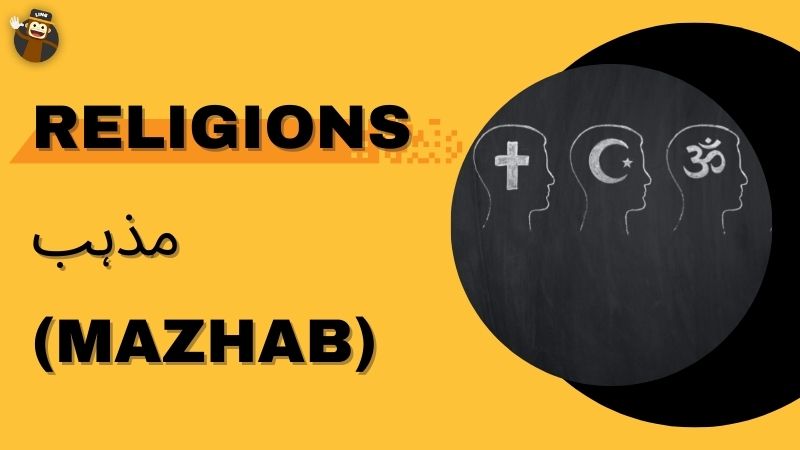
There are many religions in Pakistan, but the most predominant one is Islam. This is also why the “Muslim” word might come to your mind when you hear the word Pakistani.
The idea behind the foundation of Pakistan was suggested and eventually endorsed because of the religious conflicts between Muslims and non-Muslims during the independence era from British rule. This explains that the creation of Pakistan was mainly based on Islamic values, and thus it is the state religion of Pakistan.
What’s more, is that ninety-seven percent of the Pakistani population is Muslim.
In a nutshell, Pakistan is an Islamic nation with similar Islamic beliefs to most people of the Middle East and Central Asia. Individuals from many minority religions likewise live in Pakistan, and these religions include Hinduism, Christianity, Sikhism, Buddhism, and others.
Islam -اسلام
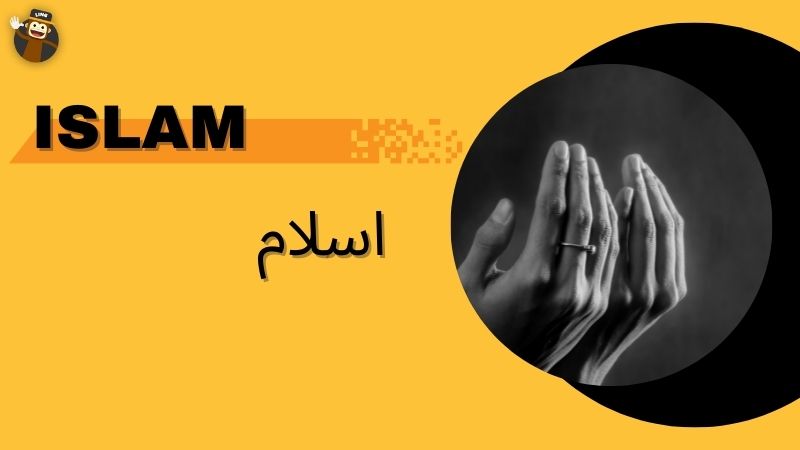
Islam oversees many private and public affairs of a more significant part of Pakistanis. The Holy Prophet Muhammad of Muslims brought Islam to the land of Saudi Arabia in the seventh century.
As per the Islamic way, he got revelations from Allah Almighty and kept those revelations in one place, which turned into the Qur’an. We, the Pakistani people, like other Muslims, are firm believers in the idea that the Quran educates people about the most proficient methods to lead their lives in the best way possible.
Pakistanis practice their religion in their daily life. They pray five times daily; therefore, you will hear prayer calls throughout the day, which is the same in most regions of India.
Pakistanis also love the month of Ramadan since that is when they can fast and spend even more time with their family. This month is marked by festivities, lightenings, open markets all night, feasts, and charities throughout the country.
It is believed that fasting improves a person’s health, and one learns how a poor person might feel when they have no food. Pakistanis also have some drives regarding donating zakat (charity in Islam) to the poor and needy and performing Hajj (pilgrimage) for the financially stable Muslims.
Eids – عیدین (Eidain)
Two major festivals for the Muslims living in Pakistan are the two Eids, collectively called عیدین (Eidain).
Eid-ul-Fitr is celebrated on the first of Shaaban (An Islamic month). It is a happy event; everyone celebrates this Eid with complete joy and gets to eat numerous dishes as a reward for fasting for a whole month.
Eid-ul-Adha is another occasion celebrated by Muslims in Pakistan to honor the way their prophet Ibrahim fulfilled the command of Allah Almighty (God in Islam) and was ready to sacrifice his son. But Allah Almighty replaced his son with a ram. It is celebrated to this date as a remembrance of the sacrifice of the prophet Ibrahim and his son, the prophet Ismaeel.
Sorrowful Muharram – غمناک محرم (Ghamnak Muharram)
Many other events and festivals occur after the month of Hajj (pilgrimage). Muharram, the preceding month of the Islamic calendar, is a sacred month for all Muslims and a month of great sorrow for the whole Muslim world. Pakistanis mourn over the massacre that happened with the family of the Holy Prophet and therefore tend to take convoys and march on the streets. 9th and 10th Muharram is declared official holidays in Pakistan.
It denotes Imam Hussain’s suffering (the prophet Muhammad’s grandson) and his allies. Many more Islamic practices are standard among the Pakistani community, which binds them together.
Christianity – عیسائیت (Esaiyat)
There are several minority religions in Pakistan and likewise have unique ceremonies and occasions. More than seventy-five hundred thousand Pakistanis are Christians and celebrate Christmas and Easter zealously. Sometimes the Muslim community joins them too.
Buddhism – بدھ مت (Budhmat)
The Buddhist community is also a minority in Pakistan. They also celebrate their events and the day on which Buddha was conceived. This celebration event is called Baisakhi Purnima. It is believed that Buddha had achieved an extraordinary insight of illumination.
Hinduism – ہندومت (Hindumat)
Pakistani Hindus also have various celebrations. Diwali (Festival of Lights) and Holi (Festival of Colors) are the most popular and celebrated joyfully in some regions of Pakistan.
Communication – مواصلات (Mawasilaat)

Language is said to be a national identity for the people of a nation. Urdu is the national language of Pakistan. Sadly, only eight percent of Pakistan’s population speaks and uses it as a first language.
Urdu is also the official language of Pakistan, but English is the most widely used language of the Pakistani people and the more significant part of the government ministries. Forty-eight percent of the total population of Pakistan speaks Punjabi, and eight percent of people talk in Pashto. Sindhi and Saraiki are spoken by twelve and ten percent of the population, respectively.
Urdu is closely related to Hindi yet is written in the extended Arabic alphabet.
If you want to communicate with someone in Pakistan, here are some things that you must keep in mind.
Communication Style- مواصلات کا انداز (mawasilaat ka andaz)
The communication style of Pakistan is primarily indirect. In rural areas, people usually sit in a roundabout or circuitous fashion. Typically, Pakistanis tend to refrain from conflict and disrespectful behavior.
Their communication and talking style comprises the main features like they should be heard patiently, as long pauses will likely occur. An excellent way of concluding is to ask open-ended questions, and this will permit them to reach the summary of the whole discussion. Stay away from cross-addressing them, as this would achieve an uncertain reaction.
Refusals – انکار (Inkar)
Giving an immediate refusal is considered impolite and may show that the individual wishes to cut off a friendship. It is ideal to approach denying demands stealthily, for example, “I’ll see what I can do.”
Most Pakistanis answer with “Inshallah” – signifying ‘assuming that God wills it’ (for example, maybe, yet if it doesn’t work out, it is the destiny of God). You can find this feature among Arabs too.
Criticism – تنقید (tanqeed)
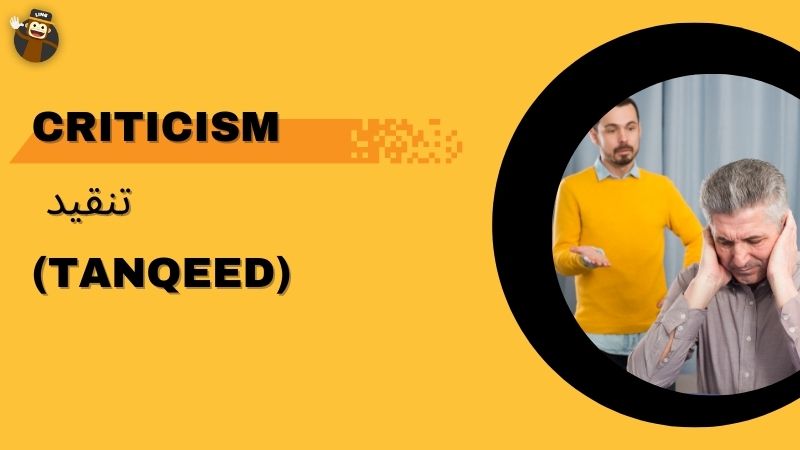
Criticism ought to be drawn quite delicately, and it can often be confused with gentle individual offense except if introduced indirectly. Explicit remarks are most likely to be addressed to those you have a long-standing personal relationship, and this should be done privately. The best way to express constructive criticism is to simultaneously suggest a slight improvement accompanied by praise.
Group Discussion – اجتماعی بحث (Ijtimai behes)
Pakistanis will generally lean toward you while chatting in gatherings and listening to music. One-on-one communication between two people might be done with fear as its straightforwardness is typically held for those who are family relatives or belong to one’s own extended family.
Personal Space – ذاتی جگہ (zati jagha)
Pakistanis are mostly not worried about private space as much personal space is not given to them, even as adults in their houses. They will stand nearer to their subjects and people of the same sex while a proper distance is maintained between opposite genders, which is different from Latin and Western cultures.
Physical Contact – جسمانی رابطہ (Jismani Rabta)
It is usual for individuals to be genuinely loving with immediate relatives and same-gender friends. For instance, men might put their arms on one another’s shoulders and quickly contact one another. Nonetheless, public showcases of warmth between opposite genders are exceptionally improper.
Hands – ہاتھ (hath)
Hands are considered to be one’s second tongue as they show much about a person’s personality and have a language of their own. The culture of using the hands is linked to the majority’s religion, Islam.
The left hand is supposed to be used mainly for cleaning and other things, not for actions like eating, shaking one’s hand, or giving someone money.
The right hand should be used for the things mentioned above. So, one should greet people using the right hand only or both hands together. Holding hands with close female relatives in public is also not considered decent.
Eye To Eye Connection – آنکھ سے آنکھ کا رابطہ (Ankh Se Ankh Ka Rabta)
It is a custom that one should not look directly into the eyes of a family leader, who is most probably a man in Pakistan. It is discouraged to look somebody in the eye when talking with them, even if the person is younger or older.
It shows arrogance and disrespectfulness. It is usually thought the person doing this might be looking for approval. Keeping your gaze low indicates that one is respectful and is not wanting any attention or consideration.
Ears – کان (Kaan)
Holding onto one’s own ears can flag regret or apology while feeling remorseful.
Pointing – اشارہ کرنا (Ishara Karna)
Pointing at items and individuals should be done using the entire hand or palm. A solitary pointer finger is considered inconsiderate and a symbol of disrespect.
Winking – آنکھ مارنا (Ankh marna)
Winking has sexual implications, and one should refrain from doing it in public as it may lead to a fistfight.
Smiling – مسکرانا (Muskurana)
Pakistanis generally have a seriously troublesome front and may not smile at outsiders frequently. They smile at those with whom they have a long-standing personal relationship. Try not to hope to get many smiles while you are there until you have known them quite well.
Pakistani Cuisine – پاکستانی کھانا (Pakistani Khana)
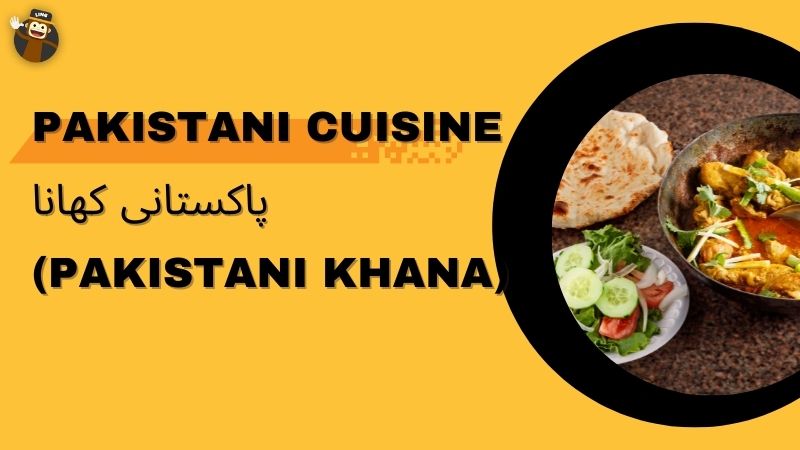
It is said that in Pakistan, there is no love more potent than the love for Pakistani food. More than ninety-five percent of the Pakistani population is Muslim.
There are only two food customs that are of primary importance for Pakistanis,
- Pig meat shouldn’t be used in any dish, no matter what, because none of the Muslims eat pork.
- The consumption of alcohol is strictly banned for Muslims in Pakistan, so this shouldn’t be served either.
A large proportion of Pakistani society lies below the poverty line, so they prefer flavorful but cheap food. And Pakistan has an abundant variety of food for all types of people. It is observed that Pakistanis prefer spicy food over sweet ones, as do people in Central Asian and South Asian countries.
When every other person might leave, you will realize that food won’t ever, and this belief is taken seriously in Pakistan. While specific individuals eat to live, most Pakistanis live to eat. In Pakistan, you will find everybody saying how their mom is the best cook on the planet, and indeed, that comes from the affection for the food we have established profoundly inside.
Cooking Style – پکانے کا انداز (Pakane Ka Andaz)
The Mughal style of cooking is usually seen in most dishes, which are rich and delicious, significantly impacting Pakistani food. The eating regimen is intensely based on meat.
Wheat and rice are the main components of everyday eating. Green tea and regular milk tea are traditional beverages served at all places.
Pakistani food recipes mix most of the cultures of the nations encircled by, like focal Asia, the Middle East, East Pakistan, and the Mughlai cooking. Since Pakistan is a remarkably different country with different societies, the conventional food varieties fluctuate from one district to another.
While K.P.K. is about that meat, Punjabis get their B.B.Q. and Karahi on, the Balochis have favored us with their Sajji, and the Sindhis gave us their Sindhi Biryani.
Now that we have explained to you the love of Pakistani people for food, let’s look into the food of each province in Pakistan to have a complete cultural experience.
Punjab – پنجاب
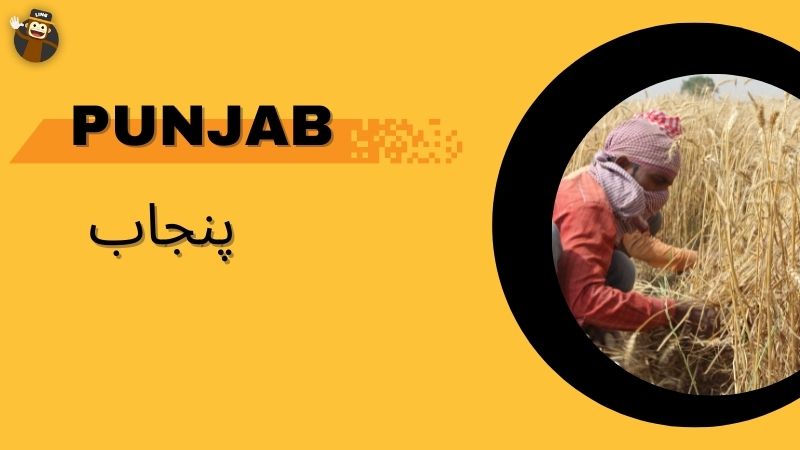
Sarson Ka Saag – سرسوں کا ساگ
You already know winter is here when you can smell saag from the chimneys. It tastes the best when served with a dab of margarine and some hot Makai ki roti.
Halwa Puri – حلوہ پوری
The more significant part of us don’t know what this enchanted stuff is made from, but it is so delicious that it simply dissolves in your mouth. You could eat as many puris as you need and won’t regret blending the a char (Pakistani pickle). It is mainly consumed as a breakfast dish.
Sindh – سندھ
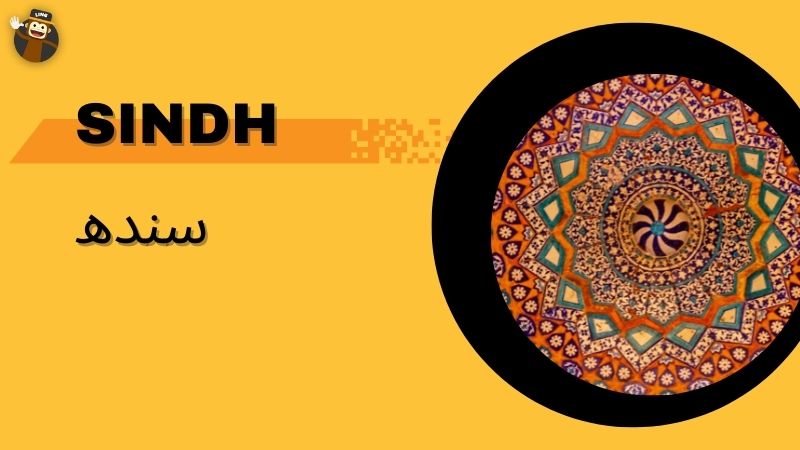
Sindhi Biryani – سندھی بریانی
Sindhi Biryani – سندھی بریانی is well-cooked rice, and the only difference it has when compared with other Biryani is that it has boiled potatoes in it. Some like the taste of them, but some don’t. Thanks to Sindh for this fantastic dish.
Thadal – تھڈل
It is a white, cold and typical sweet drink served in Sindh. Well, most importantly, it’s called Thaddal. So to break this one for you, it’s a beverage produced using almonds and khashkhaash – خشخاش, and the combined taste of them is fantastic.
Balochistan – بلوچستان
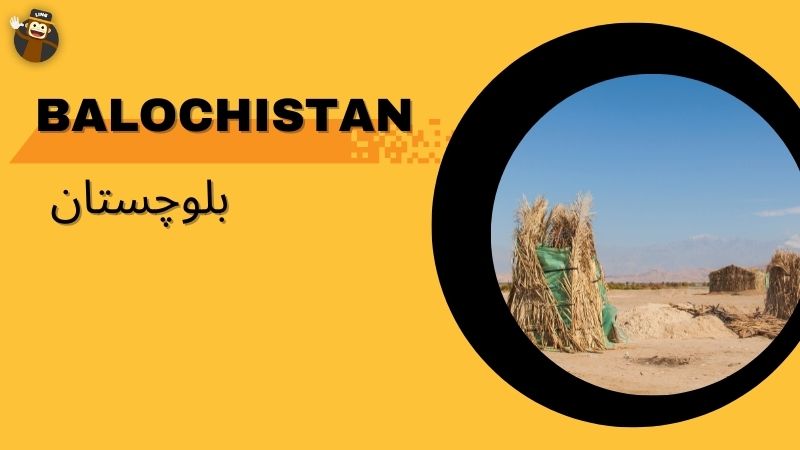
Sajji – سجی
The standard joke about the chicken crossing the street never occurred in Pakistan because before that chicken could cross the road, a Balochi might immediately catch it and turn it into a Sajji.
Seeing Sajji makes our taste buds shiver from far off. Sajji is the local and most well-known dish of Balochistan. It is composed of entire chicken marinated exclusively in salt, then cooked over coals, baiting us with that fragrance.
The cooking time requires numerous hours, yet it is worth standing by the cooking site as the smell is also quite tempting.
Khyber Pakhtunkhwa – خیبر پختون خواہ
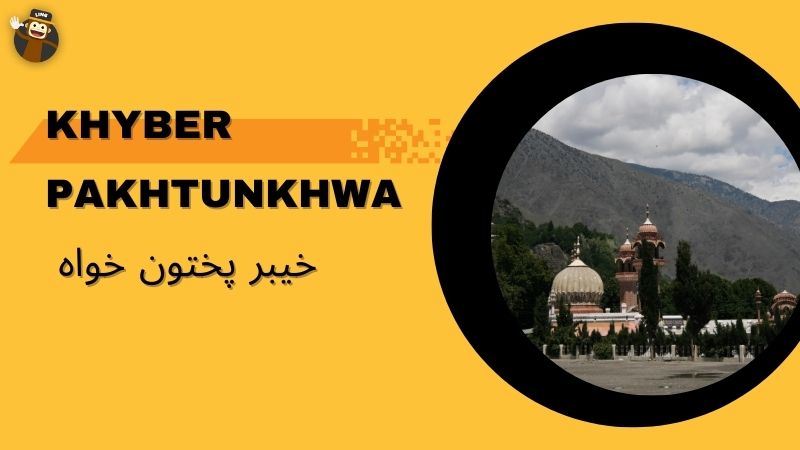
Kabuli pulao – کابلی پلاو
Get a chance to visit Peshawar or some adjoining areas’ markets. You will find an individual attempting to persuade you to try their Kabuli Pulao, and you honestly should try it since you won’t find a similar taste elsewhere.
This Pulao is usually made with lamb meat and comprises steamed rice, but since it’s blended in with dry fruits and carrots giving it a sweet taste, it probably won’t suit everybody’s hunger.
Qehwa – قہوہ
You wouldn’t have had the genuine one if it wasn’t for the Pathan holding a big pot, whose voice you could hear from a reasonable distance saying ” kahwaa, kahwaaa.”
Every Pakistani has tried it one way or the other and loves it. This otherworldly invention mixed with God knows what. It can be delighted with gur i.e., jaggery, dates, and lemon on cold winter nights, and it is perfect for digestion.
Clothes – کپڑے (Kapre)
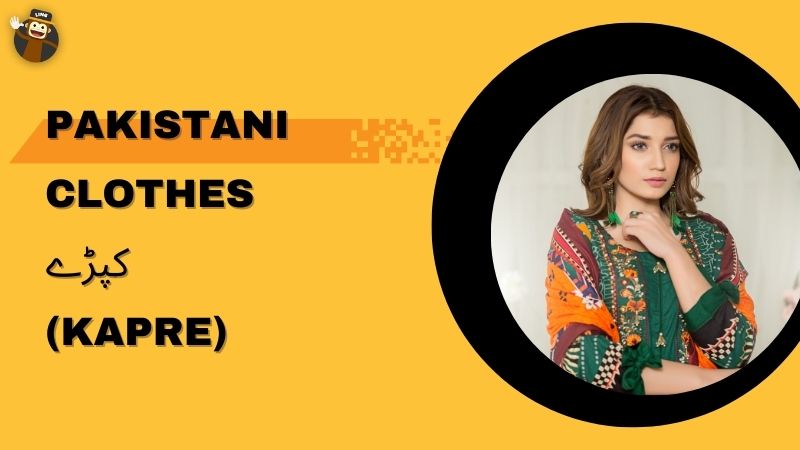
Clothing plays a vital role in the personality development of a person. Pakistani women are always fond of buying clothes but so are the men. Shalwar kameez is the national dress of Pakistan.
Pakistani clothing fashion has gone through many phases. The dresses people wear in Pakistan now differ from those worn before.
But the style in Pakistan’s national dress is like a cherry on the top of the cake, meaning it just spices things up a bit. Now, Pakistani clothing has changed to the extent that having the same old traditional clothes is considered a symbol of class.
Each province in Pakistan has its cultural clothing.
Punjab – پنجاب
In Punjab, men used to wear dhoti or lacha, the lower part of the dress, to cover the legs, but it had no partition in between. And kameez was worn on the upper part of the body.
Women used to wear simple shalwar kameez accompanied by a paranda, an accessory for the hair. These clothes can rarely be seen in rural areas, too and not many people in urban areas even know about these cultural elements.
Balochistan – بلوچستان
Balochistan – بلوچستان is the biggest province of Pakistan in the area, and so is the shalwar of people there. Balochi shalwars are popular because they are incredibly long, and only a local Balochi knows how to style them.
The women over there wear a dress with a large front pocket. A lot of needlework is also present in Balochi women’s clothes, a part of their culture.
Khyber Pakhtunkhwa – خیبر پختون خواہ
Pathan men wear simple shalwar kameez as they prefer remaining the way they were. They are proud of themselves for keeping many ancient tribal cultures alive. Pathan women prefer wearing an embroidered kameez with an extremely heavy dupatta with glass work.
Sindh – سندھ
Sindh has failed to keep its ancient culture alive. But still, the left Sindh culture is celebrated zealously, though in Sindh only. The only renowned cultural clothing left is the Sindhi topi and Sindhi Ajrak, which have a brown and maroon texture.
Caste System – ذات پات کا نظام (Zaat Paat Ka Nizam)
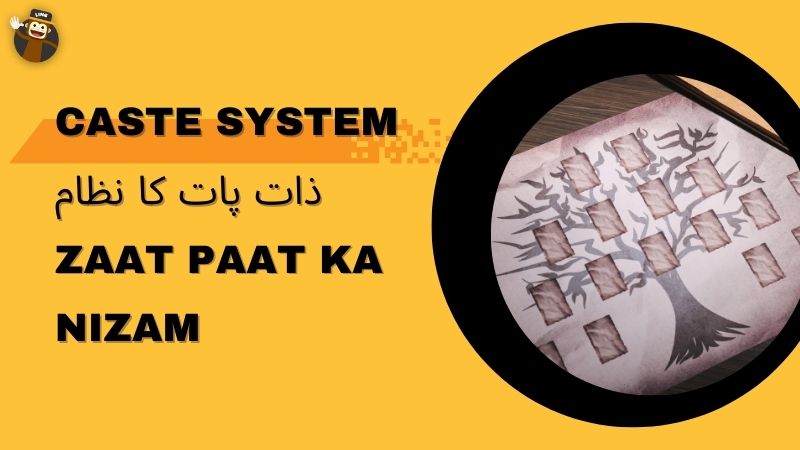
There is a caste system in the culture of Pakistan. Although it is not something that Islam, i.e., the state religion, considers reasonable, it is a system of classification based on social status.
In Punjab, many castes are considered superior to others, and this superiority is regarded by the people of those castes only and then tend to marry each other.
Butt – بٹ
The people of Butt caste are usually the people who migrated to the Kashmir valley and Mainland Punjab and are considered healthy food lovers.
Rajput – راجپوت
Rajputs are the descendants of the royal warrior leader of Rajasthan. They are usually physically strong and had an effective military strategy in the past.
Jutt – جٹ
Jutts are mainly the owners of fertile land both in India and Pakistan.
Quraishi – قریشی
Quraishis claim that they are the descendants of the ancient Arab Quraish tribe, so they are respected just because of that linkage.
Malik, Chaudhary, Khan – ملک، چوہدری، خان
These three are not even proper castes. These were the titles given to the people in British rule who had a hold of a lot of lands. A person was called Malik if he had more than 310 Kanal land. And was called Khan if he had more than 500 Kanal land.
Chaudhary’s were the same, but a Chaudhary in Punjab was considered the highest-ranking person, and things are still the same.
Due to this caste system, equality is not served in rural areas. People judge each other based on names.
Events – تقریبات (Taqreebat)
There are many events in Pakistan, e.g., 14 August is celebrated as the Independence day of Pakistan, and 6 September is celebrated as Defence day. 23 March is celebrated as Pakistan day. Besides that, Eid Milad un Nabi is marked on 12 Rabi ul Awwal according to the Muslim calendar. Basant is also observed in the first week of March and many more.
Wrapping Up
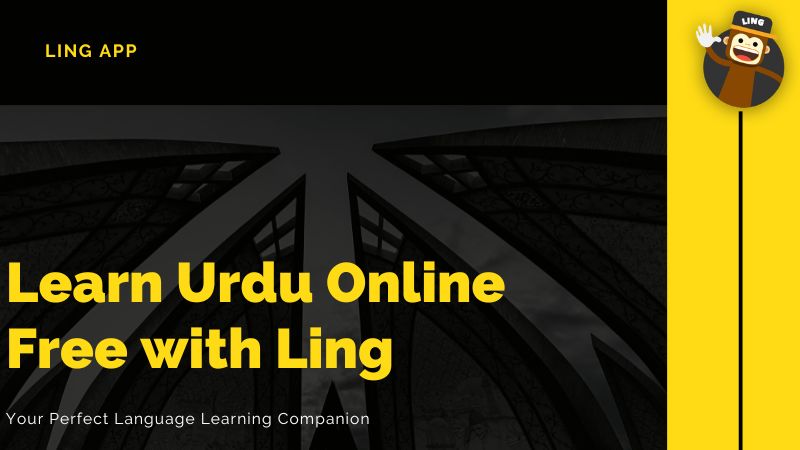
That’s it for this blog post. If you also wish to learn more exciting facts about Pakistan and the Urdu language, then download Ling now from Google Playstore and App Store and start learning the Urdu language!
This practical curriculum for learning a foreign language employs a thorough approach to take you from a total beginner to an exceptional language communicator. The platform enables customers to quickly and rapidly acquire educational materials in more than sixty languages. Its extraordinary lesson collection was created by professionals and confirmed native speakers!
Due to the inclusion of gamified content, it distinguishes itself from the competition. Additionally, it has an AI-powered chatbot that lets you quickly reinforce the lessons you’ve learned in class. You can now choose to study Urdu simply and enjoyably.
Happy Learning!





















